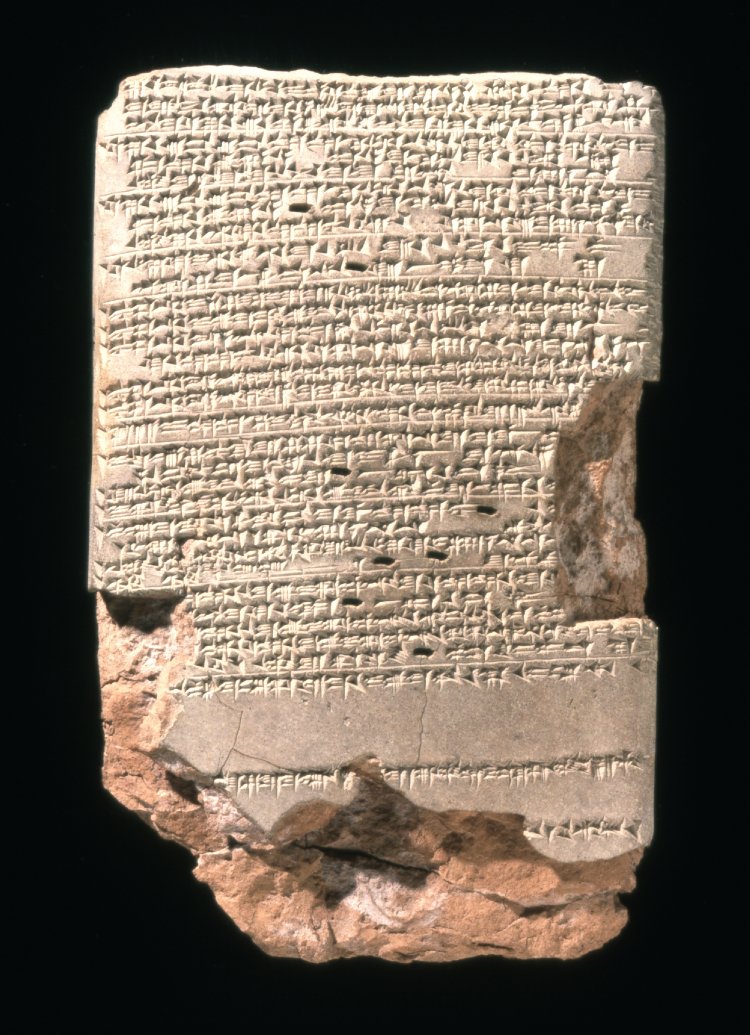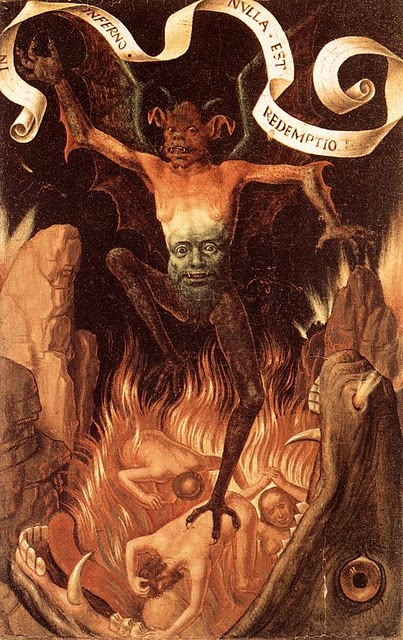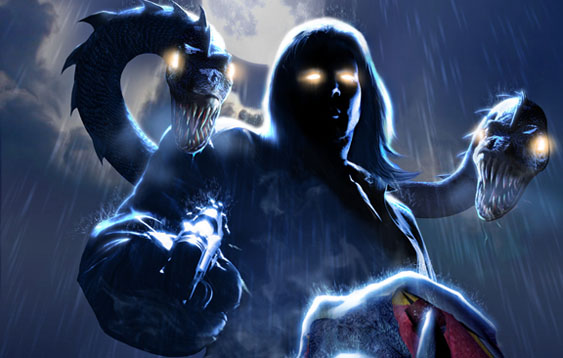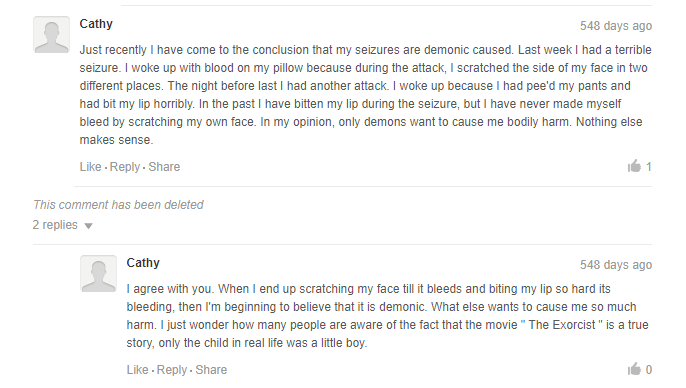It has been called the “Sacred Disease,” and in the ancient past, people who had it were either known as “divine and religiously inspired” or more commonly as “demon, devil or unclean spirit possessed.”
Today we know of this disease as epilepsy.
The history of epilepsy begins with the Babylonian codex of the late 2nd millennium BC in which many types of seizure are described as to the influence or “hand” of name-given evil spirits (Lilû, Urtilli, Ishtar etc).
For thousands of years, epilepsy was closely linked to demonology in ancient Jewish sources. It is said that during the time of the Talmud (2–5th century BCE), the Jews referred to a person with epilepsy as a “nikhpe”, meaning “one of writhes” and considered as the attack of a demon “shed” or spirit (“ruah”).
A priest is unfit to serve in the Temple if he has seizures, “even if it occurs only once in days.” According to the Talmud, epilepsy may appear for the first time at any age and it was considered to be a serious disease that may be hereditary or even contagious.
The following excerpts from the Talmud shed some light on what they thought caused epilepsy and even potential cures many centuries ago:
“If one stands nude to the light of a candle, he will be nikhpe” (person with epilepsy).
“If one stands nude to the light of a candle or the moon, he endangers himself seriously”.
“A man should not marry a woman coming either from a family of persons with epilepsy, or from a family of lepers”.
“A person with epilepsy is sometimes in full conscience and sometimes like an insane person”.
“A woman with epilepsy may conceal this defect from her environment if the seizures occur at regular times”.
In later Jewish texts, there are references to medicines such as saffron (crocus), clove (“tsiporn ha-bosem”), oxymel, and several herbs (e.g., Artemisia, Valeriana, and Arnika). Magical (nonmedication) acute and preventive means include an amulet (“kame’a”) that was worn by persons with epilepsy.
In my research into this mysterious disease, I have found interesting modern correlations between spirituality, religious fanaticism, visions, and the prophetic nature of the patients who suffered from they believed to be a supernatural malady. Even today, there are patients who suffer from epileptic seizures often describe these violent events starting sometimes days before the seizure event with dark, depressive, and even evil thoughts that do not seem to originate from themselves.
I believe that our ancestors had associated these mysterious symptoms and violent nature of the disease with demon and or unclean spirit possession. This belief did not just arise from ancient superstitious medical practitioners but from the people themselves.
Patients also often describe that right before they have a seizure attack, they develop a creepy sensation that “something or someone is beginning to take them over rapidly. Some even claim to feel movement in their body and stomachs as a type of warning that quickly reaches the point they lose consciousness and have violent uncontrollable attacks.
They have been described well by British writer Margiad Evans who had her own experiences and explained as if it was some type of “alien power that temporarily enters the body and then pushed itself out.
Evans’ describes her own experience, “the old idea of demonic possession … arose not from the onlookers of sufferers in fits but from the sufferers themselves. Because in the violent attacks one feels as though the body has been entered by a terrific alien power; and that that power is trying, after entrance, to push its way out again.”
Likewise, German writer Monika Maron, a declared atheist, reports that after her first seizure, she was “obsessed with the idea that an alien force had simply switched me off for fifteen minutes… and … slightly altered the way my brain functions. I didn’t really believe that, but it corresponded well with the state in which this inexplicable incident had left me”
The English word “epilepsy” is derived from the Greek word e·pi·le·psiʹa, meaning “seizure.” The meaning of the word seizure originally meant the action of capturing someone or something using force ie: takeover, invasion colonization and in medical terminology, a sudden attack of illness, especially a stroke or an epileptic fit.
Today, the term “Epilepsy” is medically defined as “a neurological disorder with recurrent sensory disturbances, loss of consciousness or convulsions; associated with abnormal electrical activity in the brain.” A severe epileptic fit which is accompanied by unconsciousness is called grand mal, and mild forms of a brief duration where the patient is often aware of his or her surrounding (conscious) are called petit mal.
As many of you know, part of my Great Work entails connecting these ancient teachings with modern science and also finding correlations with my research on parasitic fungi/molds which I have associated with what our ancestors had called demon or unclean spirit possession. Let me add that I have also discovered interesting research that links fungi/molds to epileptic seizures that I will share with you in a future article which further validates my work on this subject.
These ancient stories of epilepsy and spirit possession really seem to develop after the advent of conservative Gnosticism and Judaism with the Old Testament (Old Law) which later developed into the early teachings of Christianity in the New Testament (New Law). However, the study of religious and spiritual symptoms in epilepsy have received relatively little clinical and scientific attention.
Even biblical figures of the Old Testament such as Samson and Ezekiel had shown all the classic symptoms of epilepsy. A 2001 article in the New Scientist had detailed the research of Eric Altschuler, a neuroscientist at the University of California at San Diego who claimed that the Biblical strongman Samson may have been the earliest known sufferer of antisocial personality disorder and that Ezekiel, who lived about 2600 years ago, showed extreme classic symptoms of temporal lobe epilepsy.
Altschuler had written, “People with the disease experience partial seizures, often accompanied by a dreamy feeling that things are not quite as they should be. Patients are often misdiagnosed with psychiatric problems.
Neurologically, Ezekiel displayed some obvious signs of epilepsy, such as frequent fainting spells and episodes of not being able to speak.”
The Biblical figure, who chronicled the fall of Jerusalem in 586 BC, exhibited other peculiarities associated with the disease. For instance, he wrote compulsively, a trait known as hypergraphia. Altschuler points out that the Book of Ezekiel is the fourth longest in the Bible – only slightly shorter than Genesis. “It’s impenetrable,” he says. “He goes on and on.”
Examples can also be found in the New Testament under Matthew 4:24 where epileptic seizures are listed as one of a group of diseases. In Matthew 17:15 a man called to Jesus, “Lord, have mercy on my son, for he is an epileptic and suffers terribly; for often he falls into the fire, and often into the water.” Jesus said the boy was possessed by a demon. The demon was ordered out and the boy was healed.
The symptoms of the affliction were frequently those of bodily disease (as dumbness, Matt. ix. 32 ; blindness, Matt. xii. 22 ; epilepsy, Mark ix. 17-27), or those seen in cases of ordinary insanity (as in Matt. viii. 28; Mark v. 1-5), since also the phrase “ to have a devil ” is constantly used in connexion with, and as apparently equivalent to, “ to be mad ” John vii. 20, viii. 48, x. 20, and perhaps Matt. xi. 18; Luke vii. 33)
In Luke 9:39, it is written, “and behold, a spirit seizes him, and he suddenly screams, and it throws him into a convulsion with foaming at the mouth, and as it mauls him, it scarcely leaves him.”
We also find a similar reference in Acts 8:7; “For in the case of many who had unclean spirits, they were coming out of them shouting with a loud voice; and many who had been paralyzed and lame were healed.
And they brought the boy to Him. When the spirit saw Him, immediately it convulsed the boy, and he fell on the ground and rolled about, foaming at the mouth. Jesus asked the father, “How long has this been happening to him?” And he said, “From childhood. It has often cast him into the fire and into the water, to destroy him; but if You are able to do anything, have pity on us and help us” (Mark 9:20-22).
It is obvious that this boy who had symptoms of epilepsy was said to be actually possessed by a demon.
Please keep in mind that the original Scripture was written in Greek so in Matthew (4:24; 17:15) the Greek word se·le·ni·aʹzo·mai is used in place of epilepsy. The Greek meaning is “to be moonstruck.”
Today, we find that the King James Version uses “lunatick,” while other modern translations use the word “epileptic(s).” (Matthew 4:24; 17:15.—AS; NW; RS.)
To be continued…

Moe is the founder of GnosticWarrior.com. He is a father, husband, author, martial arts black belt, and an expert in Gnosticism, the occult, and esotericism.









I have two seizures one in 2020 and one last year the first one was a day after my birthday and the next one was in October of last year I get the feeling someone has put a voodoo spell on me because the two times it happened was when I was by myself sleeping both happened at night I smell a foul scent like a tire burning then I start staring in the ceiling then I fell asleep next thing I wake up next morning in the hospital my family said they heard noise and found me foaming at the mouth and shaking hard and grinding my teeth which I don’t remember any of that but I think someone put a strong voodoo spell on me because I just fell asleep my family said they heard noise as if someone and me was in a fight but I need some answers they said because of alcohol it happened but the second one that happened I was completely sober so I know it’s something else.
I think the cause of the seizures and other “demons” in the Bible was the brain parasite toxoplasmosis gondii. The first evidence of t. gondii was in Egypt, where they worshipped cats exactly when and where the Israelites were! Under-cooked pork is the “most important” way t. gondii is transmitted. Some scholars think pork was forbidden for Jews because Baal worship often included a pork feast, and it was apparent that eating pork caused a lot of problems evident in their behavior, like hyper-sexuality. Later, in Greece, “Hippocrates suggested that Epilepsy is a “holy sickness” and that its suffering is controlled by cleanliness from demon-possession by abstaining from pigs”! You can starve t. gondii with the ketogenic diet (t. gondii causes seizures which are normally treated with a ketogenic diet) or kill it with schizophrenia drugs (t. gondii causes schizophrenia). So, T. gondii is easy to treat, but hardly anyone knows about it, despite how terrible the symptoms are.